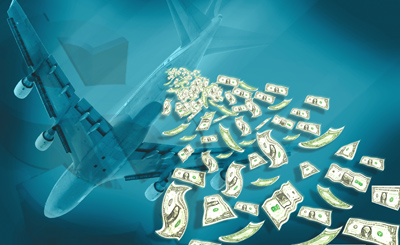INDIAN ARMED FORCES CHIEFS ON OUR RELENTLESS AND FOCUSED PUBLISHING EFFORTS

The insightful articles, inspiring narrations and analytical perspectives presented by the Editorial Team, establish an alluring connect with the reader. My compliments and best wishes to SP Guide Publications.

"Over the past 60 years, the growth of SP Guide Publications has mirrored the rising stature of Indian Navy. Its well-researched and informative magazines on Defence and Aerospace sector have served to shape an educated opinion of our military personnel, policy makers and the public alike. I wish SP's Publication team continued success, fair winds and following seas in all future endeavour!"

Since, its inception in 1964, SP Guide Publications has consistently demonstrated commitment to high-quality journalism in the aerospace and defence sectors, earning a well-deserved reputation as Asia's largest media house in this domain. I wish SP Guide Publications continued success in its pursuit of excellence.
- A leap in Indian aviation: Prime Minister Modi inaugurates Safran's Global MRO Hub in Hyderabad, Calls It a Milestone
- All about HAMMER Smart Precision Guided Weapon in India — “BEL-Safran Collaboration”
- India, Germany deepen defence ties as High Defence Committee charts ambitious plan
- True strategic autonomy will come only when our code is as indigenous as our hardware: Rajnath Singh
- EXCLUSIVE: Manish Kumar Jha speaks with Air Marshal Ashutosh Dixit, Chief of Integrated Defence Staff (CISC) at Headquarters, Integrated Defence Staff (IDS)
- Experts Speak: G20 Summit: A Sign of Global Fracture
Airlines: Afloat at What Price

What drives the economics of an airline and what decides whether it will survive through a crunch phase in the industry.
The refrain that it takes three years to turn around an airline’s account books from red to black never fails to intrigue. It is hard to corroborate with infallible reliability the veracity of this kind of voodoo economics. On the contrary, rise in maintenance costs on equipment and vehicles would indicate a trend towards increasing costs.
Eventually, survival will depend on deep pockets, deep enough to cushion recurring losses in the interim before profits start flowing in. But there are several potholes before reaching that stage—a fledgling airline could be done in by over ambitious planning or get gobbled up by competition.
The Indian aviation industry is at an interesting stage of consolidation with three major mergers orchestrated already—Air India and Indian, Jet Air and Jetlite, and Kingfisher and Air Deccan. Consolidation of these three entities together account for more than four-fifths of the total aviation industry in India even as a few others appear on the horizon.
So, what drives the economics of an airline and what decides whether it will survive, especially through a crunch phase in the industry? According to Centre for Asia Pacific Aviation estimates, the combined losses of Indian airlines for FY 2007-08 are Rs 1,979 crore ($500 million), with all airlines being in the red (although Spice Jet claims to have broken even during the year, its unaudited results for QE December 2007 show an operating profit as well as a net profit). An insight into the working of an airline is not a simple and straightforward exercise, especially when the airline under study is privately owned, where complete financial transparency is neither desirable nor forthcoming. The issue gets further obfuscated if the principal company has other (profit making) ventures that allows for accounting jugglery. A better understanding of the financial aspects is possible in the case of public companies as it has to publish audited results for the benefit of shareholders.





